Last Updated on March 8, 2024 by Devour Tours | Published: November 2, 2017
Follow this cocido madrileño recipe and you’ll get a taste of Madrid wherever you go. On cold winter days, there’s no better feeling than digging into a deliciously warm and comforting meal. For most Madrid residents, nothing warms the soul quite like a good cocido madrileño.
There are many things to do in Madrid in winter, but having a cocido, and then a siesta, is probably one of the best winter plans for any madrileño. Spaniards have quite a few hearty dishes to choose from, but as the cooler temperatures move into Madrid, none can compete with the city’s most famous stew.
The dish originated in Madrid, and grew in popularity during the 19th and 20th centuries. Since the main ingredient—chickpeas—were relatively cheap and easy to acquire, it was often on the menu in taverns and small restaurants. Nowadays, it’s a household staple. There is a reason why it’s the first of our typical foods in Madrid.
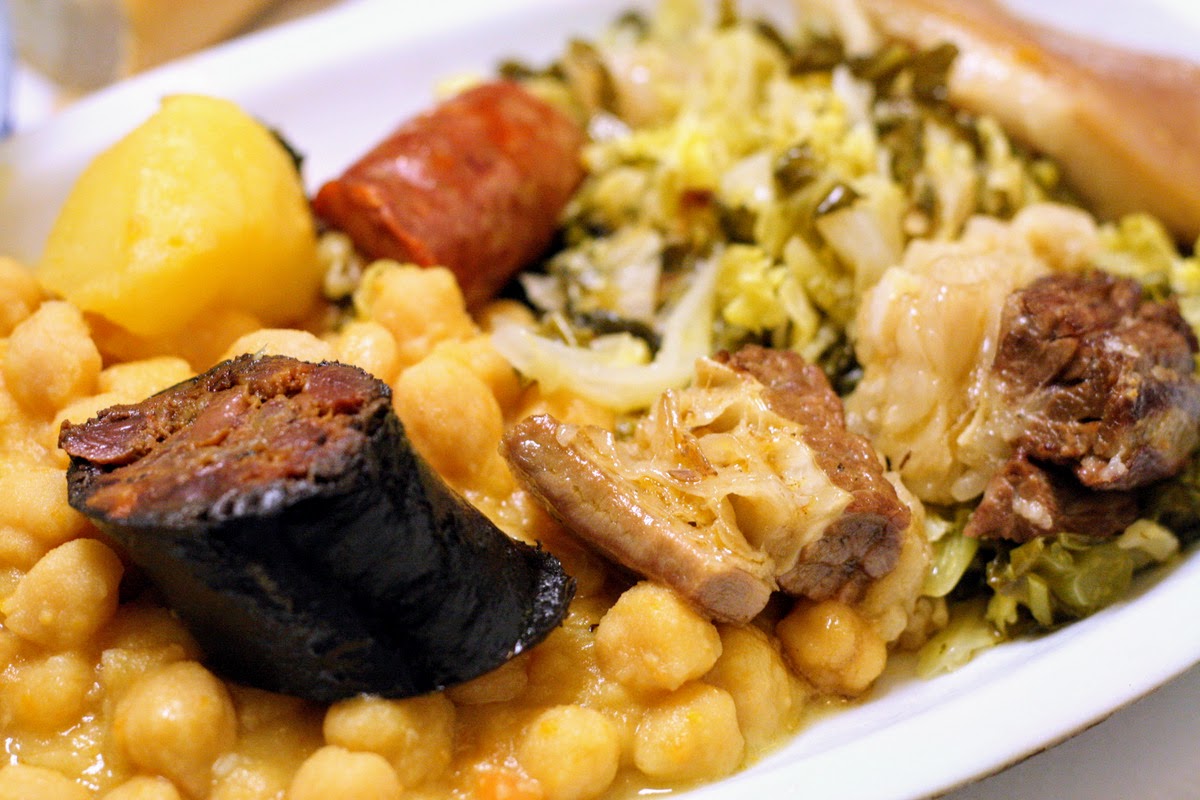
How to eat and enjoy a traditional cocido
Cocido madrileño is usually eaten in two or three courses, depending on where you’re eating it. The traditional way has three courses, but many people at home prefer to eat everything together.
The first course is a soup, also known as the sopa del cocido. Once the chickpeas, meats and vegetables have been cooked, the broth is separated and used to make soup. It’s a kind of noodle soup.
Then, the rest of the ingredients become the main dish, often in two rounds. First, the chickpeas and veggies, and following that, the stewed-to-perfection meat. If you’re wondering why, the tradition comes because originally the cocido would be prepared in a clay stewpot, and it became necessary to serve it in these three perfect servings as diners would enjoy the multiplicity of flavors.
Enjoy this traditional Spanish meal at home by following this cocido madrileño recipe. If you want to see it live, we strongly suggest you visit some of the best places to eat cocido madrileño in Madrid, where you’ll see the clay stewpots and the traditional way to enjoy this meal.
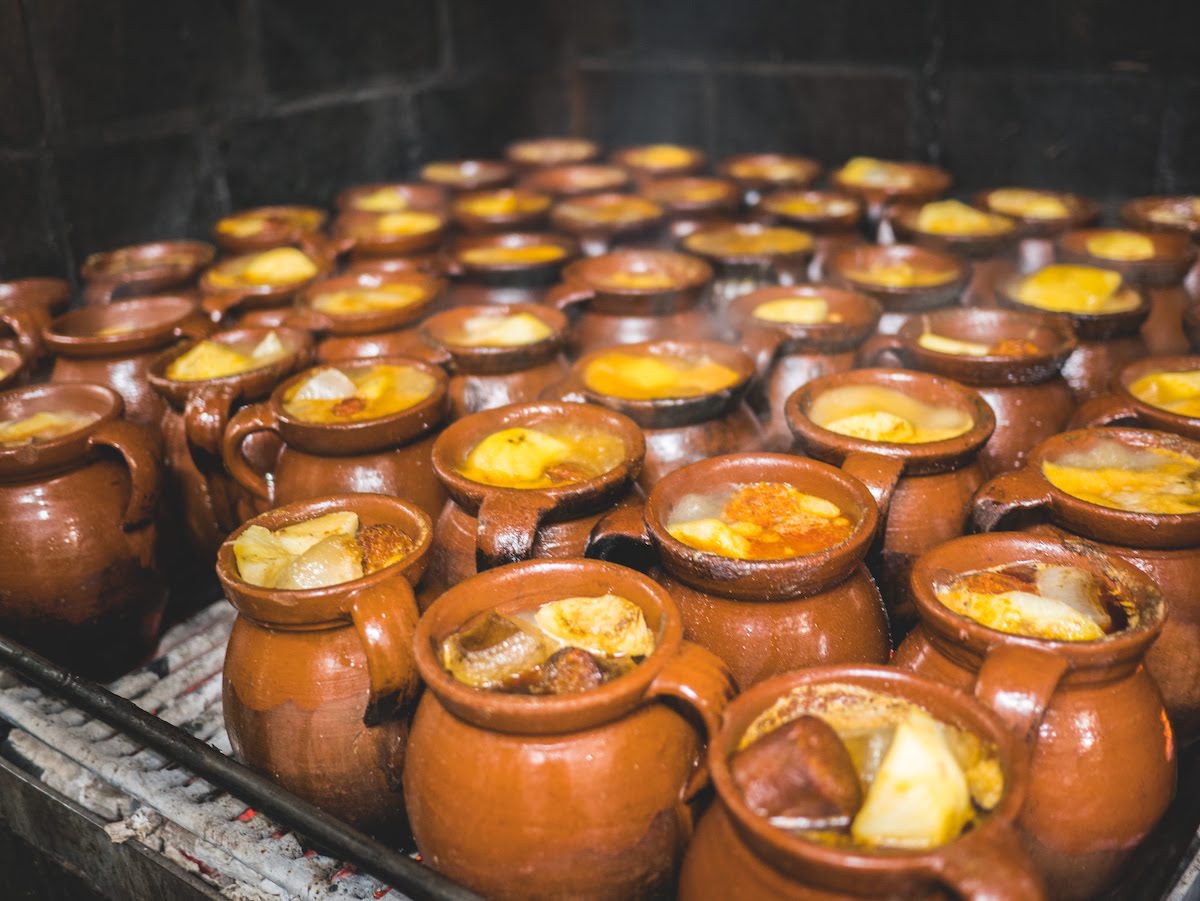
Cocido madrileño recipe ingredients
- 2 cups chickpeas
- 9 oz. veal, cut into 2 inch chunks
- 5 oz. chunk of Serrano ham
- 1 5” ham bone
- 1 3” chunk of veal bone marrow
- 5 oz. 2-inch thick bacon chunks
- 1 large 10 inch chorizo cut into 4 inch pieces
- 2 cloves of garlic
- 1 onion
- 2 large carrots
- 2 potatoes
- 1 cup pasta noodles
- Water, enough to cover the ingredients and two inches over
- Olive oil
- Salt
- Morcilla (blood sausage) [can be omitted]
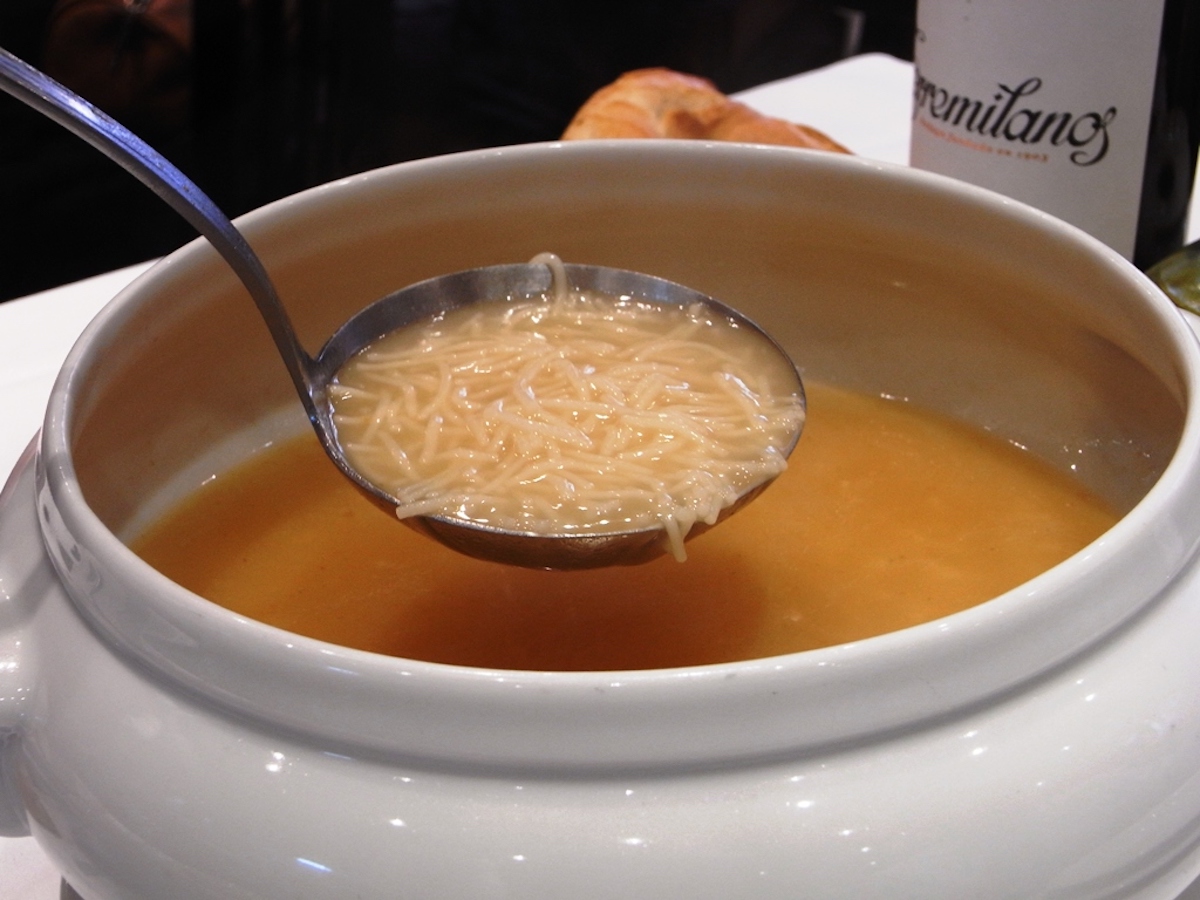
Cocido madrileño recipe instructions
- Allow garbanzo beans to sit in water overnight. drain excess water and set aside.
- Peel the garlic, onion, carrots and potatoes and set aside.
- Cook veal, bones, chorizo and ham in a large pot in just enough water to cover. Add salt to taste.
- When the water begins to boil, remove the excess foam.
- After an hour, add the chickpeas, garlic, onion and carrots, whole.
- Cover pot and simmer for an hour and a half.
- Drain the stock and reserve the rest of the ingredients on a platter.
- Put the stock back into the same pot and use it to cook the noodles.
- In a different pot, boil the peeled potatoes. Drain and place along with the rest of the ingredients you reserved.
- Cut the cooked vegetables into big chunks and add to the meat platter.
This recipe serves 6.
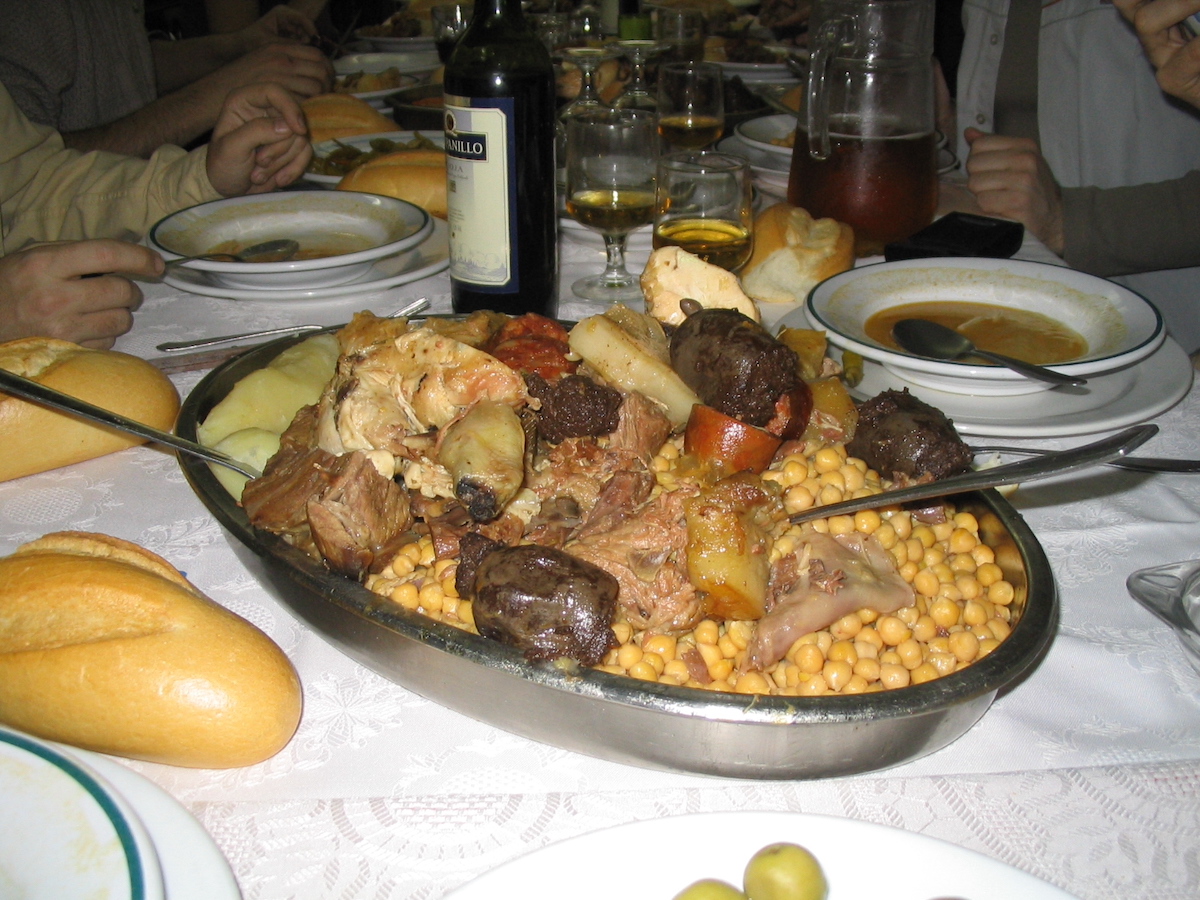
Update Notice: This post was updated on March 8, 2024.
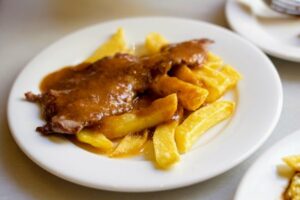








Is it possible to freeze a Spanish corcido to use another day?.
Hi Susan! Yes, you absolutely can freeze cocido and eat it later.
However, potatoes don’t do real well in the freezer… I would freeze some of the broth separately and cook the potatoes fresh when I I serve the frozen meal.
This fascinates me as it looks like you can get different meals out of the same pot.
I grew up on Cocido. The broth is wonderful and perfect to freeze. I add some sliced carrots, chickpeas and cabbage to the broth before freezing. ,Its great by itself or boil broken spaghetti seperatly to add to broth .My dad was from Madrid.